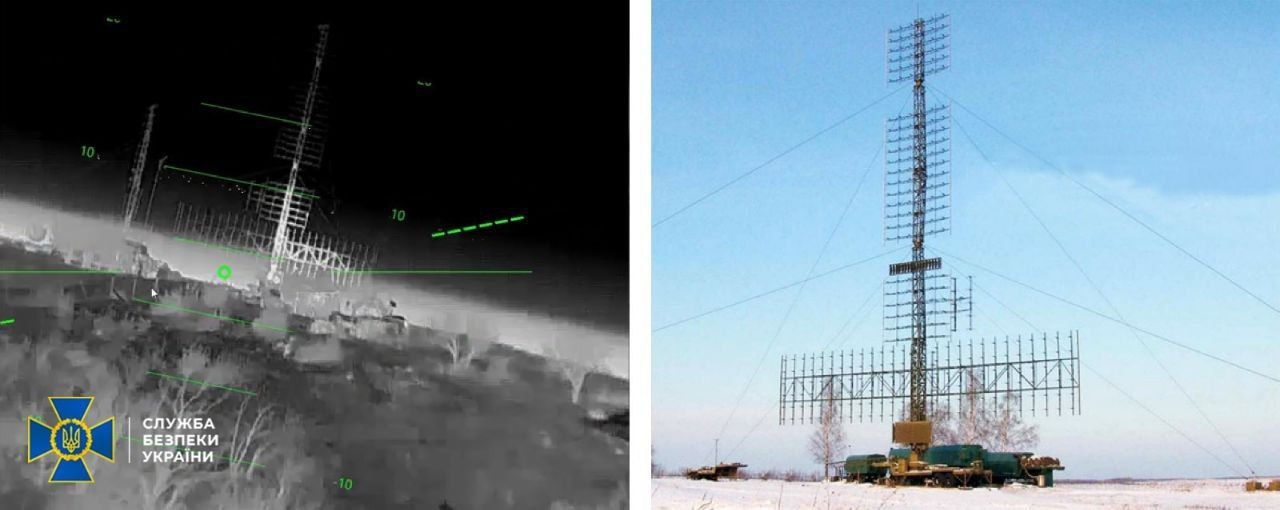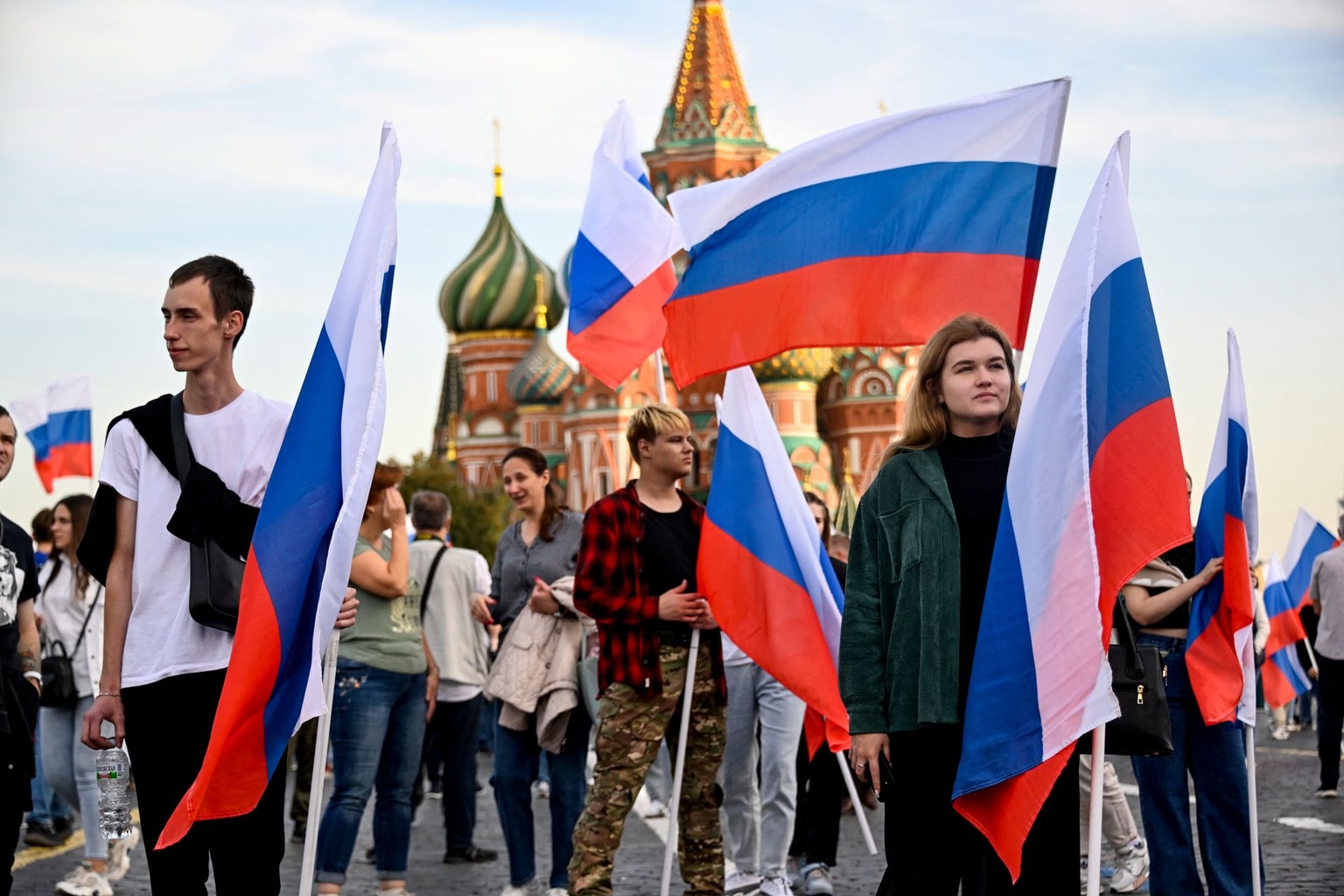
Kyiv and Washington’s mobilization age blame game misses the point
Kyiv and Washington must stop trading blame and start solving Ukraine’s manpower crisis.
Ukrainian military cadets take an oath at the National Museum of the History of Ukraine in the Second World War in Kyiv, Ukraine, on Sept. 8, 2023. (Roman Pilipey / AFP via Getty Images)
“The biggest problem is the lack of people.”
These words, heard by journalists, including myself, from Ukrainian soldiers and commanders across the front line for the past year, are no outlier. For most of 2024 and into 2025, Ukraine’s biggest issue on the battlefield has not been firepower but manpower — specifically infantry.
In the face of Russia’s seemingly relentless assaults on multiple fronts, Ukraine’s defensive infantry positions are often undermanned, and in some cases, as I have heard personally from soldiers fighting near Pokrovsk and Kurakhove in Donetsk Oblast, not manned at all. Under these conditions, the Ukrainian military has been increasingly overstretched, opening up noticeable weak points in its lines that Russia has become better and better at exploiting.
The solution seems obvious on the surface: Ukraine needs to bring more people into the army, both to replenish losses and to allow for proper rotation of front-line units. That means more mobilization, especially of men physically fit and strong enough to handle the brutal conditions of modern trench warfare.
In a rare case of public pressure on Kyiv to change its internal policy on how the war is fought, representatives of the Biden administration, including then-Secretary of State Antony Blinken and then-National Security Advisor Jake Sullivan, called for further lowering the mobilization age to 18 on multiple occasions.
The age was already lowered once in the first half of 2024, from 27 to 25, as part of broader changes to mobilization legislation that were passed by the parliament after months of deliberation and controversy.
Wary of how such a move would exacerbate the internal tensions that forced mobilization already brings to wartime Ukrainian society, President Volodymyr Zelensky has rejected the idea outright. He argues that without the promised equipment for new brigades, taking more young men out of civilian life makes no sense.
“We must focus on equipping existing brigades and training personnel to use this equipment,” Zelensky said in a post on X on Dec. 10. “We must not compensate for the lack of equipment and training with the youth of soldiers.”
Now, mobilization age could be one of the rare issues where the new Trump administration aligns with its predecessor on Ukraine. Speaking on ABC News just a week before Trump’s inauguration, then-nominee and now National Security Advisor Mike Waltz again pushed the issue.
"Now, mobilization age could be one of the rare issues where the new Trump administration aligns with its predecessor on Ukraine."
"If Ukrainians have asked the entire world to be all in for democracy, we need them to be all in for democracy... We need to see those manpower issues addressed," he said.
Though hopeful early signs suggest Trump will broadly support Kyiv’s call for “peace through strength,” the mobilization age debate threatens to become a dangerous flashpoint in the future of bilateral cooperation.
It doesn’t have to be this way.
The blame game between Washington and Kyiv must be nipped in the bud because if it isn’t, their common aim — forcing Russia to abandon its war of conquest — will not just suffer but could collapse entirely.

Both sides have seemingly reasonable arguments, but they obscure deeper issues under the surface.
Washington’s demand for Kyiv to simply be “all in” and lower the mobilization age coldly ignores how painful the human cost of three years of full-scale war has been for Ukraine. No sovereign country in the 21st century should have to endure what Ukraine has suffered: a campaign of strategic attrition waged by a much larger neighbor, blending Soviet-style human wave tactics with the brutality of modern drone warfare.
"Washington’s demand for Kyiv to simply be 'all in' and lower the mobilization age coldly ignores how painful the human cost of three years of full-scale war has been for Ukraine."
Forced mobilization on a large scale — especially when voluntary enlistment has plummeted — represents, in many ways, a fundamental breakdown of the social contract between state and citizen.
Even Russian President Vladimir Putin, facing his own manpower issues, has been desperate to avoid a large-scale forced mobilization, despite the chance of internal unrest being close to zero. Ukraine, as a democracy built on individual rights and freedoms, faces an even greater challenge.
It’s easy to point from a safe Western country to the existential threat faced by Ukraine and expect military-aged men to still be lining up to fight as they did in 2022. But for young men bombarded with images and stories of the horrors of the trenches for three years, serving in infantry is often seen as a one-way ticket to injury or death.
On top of that, the demographic argument is well-documented: the generation Washington wants to make eligible for forced mobilization is not only one of the smallest in Ukraine’s population pyramid but is also crucial for rebuilding the country’s postwar future.
Chasing a delusional scenario in which neither Ukraine or Russia is defeated and the world eventually goes back to normal, the U.S.’ policy of holding back key weapons systems for years and drip feeding aid to Ukraine “as long as it takes” remains the main reason Kyiv finds itself in this position now, seemingly running out of manpower.
That said, Kyiv’s rebuttal — that Ukraine needs more weapons, not conscripts — is also fundamentally dishonest with respect to the reality on the ground.
This failure was starkly exposed around New Year’s with Ukraine’s newly formed 155th Mechanized Brigade — trained and equipped by France as the intended poster child of a new program where foreign partners each took on a brigade.
The deal was meant to be simple: France provides the heavy weapons, while Ukraine supplies the personnel. Paris kept its end of the bargain, but Kyiv failed to do so. Ukraine peeled off bits of the brigade to plug holes in the front line, resulting in a poorly organized and unmotivated brigade that saw over 1,000 desertions before firing a shot.
The 155th is not the only such problematic case, but part of a tendency that was so damaging that Zelensky moved to cancel the formation of further new brigades in January.
Ukraine’s chronic struggles with building effective fortified defensive lines ahead of Russian offensives, as well as its Soviet-style command culture, marked by frantic withdrawals from near-surrounded cities, have also led to higher losses than necessary.
While Ukraine does need a greater inflow of physically fit men to refill its ranks, it must first improve how it utilizes the human resources it already has. There’s little point in exacerbating domestic tensions with a new law to draft tens of thousands of younger Ukrainian men if they are sent into an environment of poor training and leadership, where their chances of survival are already slim.
Recent decisions to cancel the formation of new brigades and shift the military into a corps-based system offer hope that Kyiv is beginning to address these issues. Having said this, yes, Kyiv does need to face the mobilization problem head on: Ultimately, when it comes to acknowledging the problems that plague the defense of the country, there is no getting around the basic need for more people.
Part of that likely means lowering the mobilization age, if not to 18, then perhaps to 21. If the last mobilization law is anything to go by, this process could drag out for months, as Ukrainian lawmakers from all parties avoid association with the unpopular measure.
Again, it doesn’t have to be this way. Just as with other urgent internal issues, the first step is to take responsibility — to prioritize Ukraine’s future over short-term approval ratings.
2025 could bring peace to Ukraine, but only if Russian forces are halted by a strong, consolidated Ukrainian defense. Even if a peace deal doesn’t return occupied Ukrainian territory, it can’t come about without first shattering Moscow’s conviction that it can break Ukraine.
This monumental task can only be achieved together: both Kyiv and Washington must do everything possible to pressure Russia, on the battlefield and the world stage. To do that, they must align their vision, communicate clearly, and most importantly, stop expecting the other to do more before acting themselves.
Ukraine’s manpower crisis is a great place to start.
Editor’s Note: The opinions expressed in the op-ed section are those of the authors and do not necessarily reflect the views of the Kyiv Independent.










